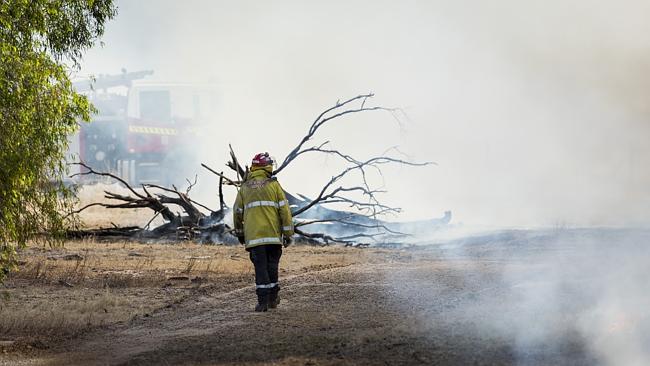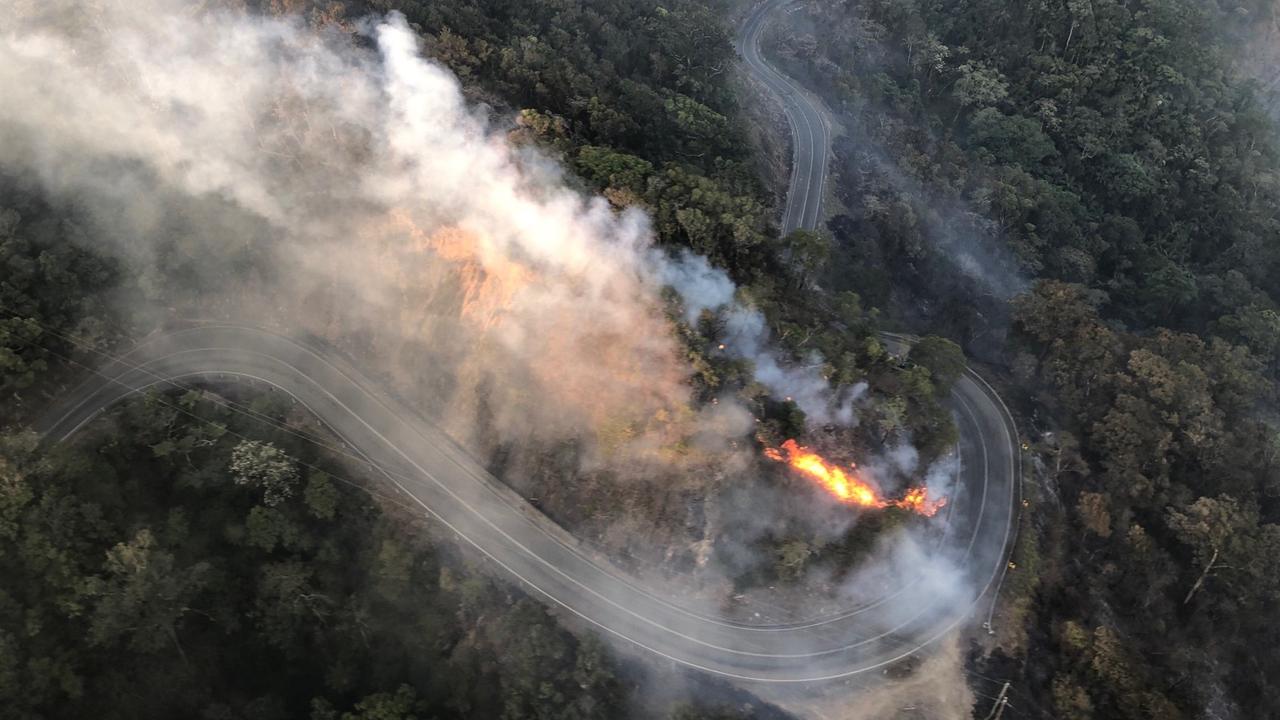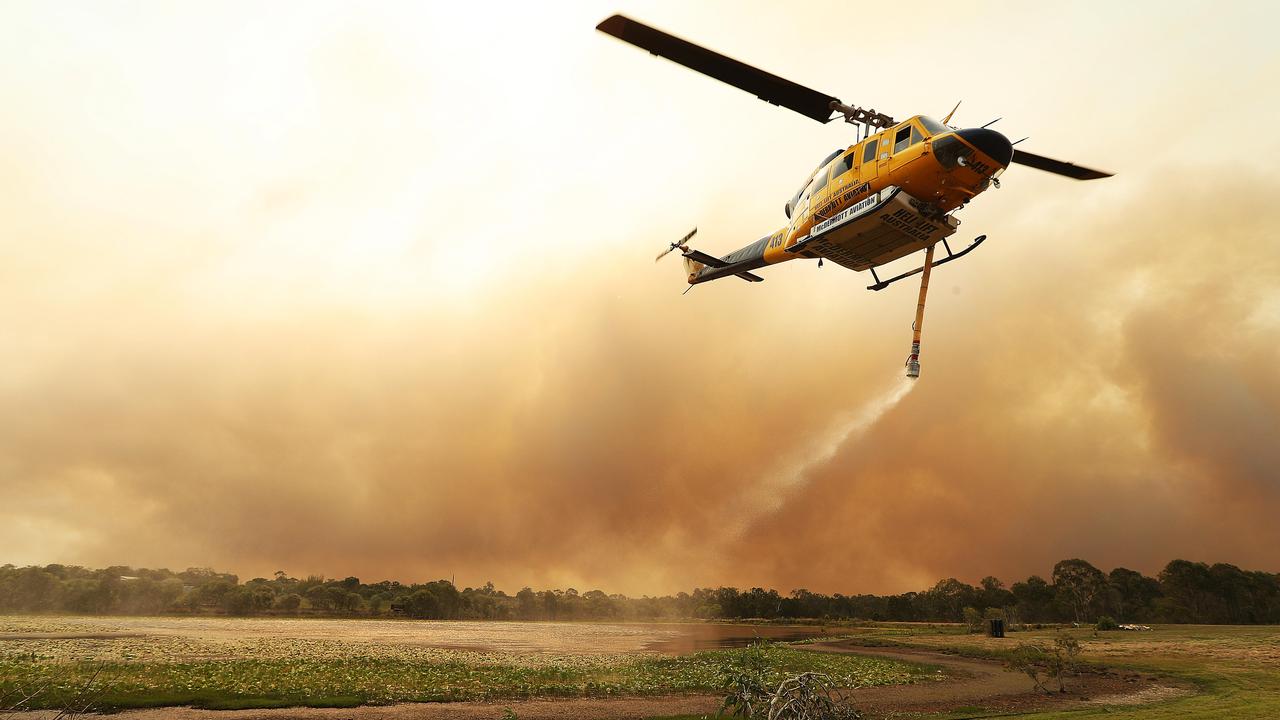The sunburnt continent: rising fire danger
Bush residents ignore the growing risk of fire at their peril.

The ancient karri and wandoo forests were bright green and seemingly forever damp in the days when loggers used hand saws to fell the huge trees they fed to the mill towns dotted throughout the southwestern corner of our land.
Old-growth logging ended in a political firestorm more than 15 years ago. Now another debate rages in this once lush pocket: how do we continue to live safely in an environment increasingly prone to deadly fire?
The continent is drying. Steady rainfall decline in the area south of Perth and in southeastern regions has created huge difficulties both for the surprisingly high proportion of residents who have not grasped how much has changed, and for the government agencies forced to face their own inadequacies while attempting to deal diplomatically with the people who entrust them with their care.
The Swan coastal plain — which surrounds the old mill town of Yarloop, razed to the ground this month — is made of peat, a nightmare for firefighters; as the landscape dries, even the dirt beneath their feet will catch fire.
Both sides of the continent wrestle with the recurring dilemma of how to fight fires where houses are nestled close to forest and bush. Already this summer, bushfire destroyed 116 homes along the Great Ocean Road in Victoria. Two out-of-control blazes killed five people in Western Australia, following on from the 2014 season, which was rated the worst for 50 years.
With the danger this season far from over, attention has turned to what we can do now to avert more disaster.
Some say the crisis is largely self-inflicted. “In my view, it is of our own making,” WA Liberal senator Chris Back tells The Australian. The former chief executive of the Bush Fires Board of Western Australia says the lessons of the 2009 Black Saturday fires in Victoria have not been learned and most of the 15 recommendations of the subsequent Senate inquiry have been ignored.
He recites his list of factors contributing to an increased risk of devastating fires: the influence of misguided green groups; a decline in native forest harvesting; the lack of clarity about prevention measures in national parks; and state and federal government inactivity.
He worries more people live at the “urban-rural interface”, such as hobby farms, without understanding fire risk or equipping themselves with fire mitigation knowledge. “Governments at both state and federal levels have got a higher duty of care and I fear that we need to be doing a lot more to discharge that duty,” Back says. “We need to return to the principles of prevention and not be focusing so much on the response in managing bushfires.
“We’ve got what may be a well-meaning but misguided dominance by green groups who think they are saving precious endangered plant and animal species by avoiding fuel reduction. In fact, what they are doing — and we have enormous evidence — is they are contributing to destroying protected plant and animal species.”
In November, fire tore through the Cape Arid National Park near Esperance on WA’s remote south coast. armers, including the brothers of Kim Curnow, who perished in the fire trying to save others, attacked the absurdity of state law that prevented them from putting out the fire while it was confined to crown land — when, they say, it was still manageable.
Aboriginal leaders have been refused permission to carry out traditional burns in the bush around Esperance, a practice they say keeps people and animals safe from the hottest and most destructive bushfires.
“(The coastal area) is the only habitat of the western ground parrot, an absolutely beautiful little parrot,” Back says. “There has been no fuel reduction burning, supposedly to protect the parrot. Cape Arid was the subject of a massive fire … in November and we fear we have probably wiped out the entire habitat and the entire species.”
In fact, two small pockets of habitat survived, but the parrot faces an uncertain future.
Back attacks the rules barring firefighters from entering public land to suppress and prevent fires and undertake backburning.
These rules were a contributing factor to the two fires, both sparked by lightning, that ravaged Victoria’s Otway Coast along the scenic Great Ocean Road on Christmas Day, destroying 116 homes in Wye River and Separation Creek
“One was in the state forest in the Otways and that fire was extinguished within hours with very minimal loss of land. Next door in the national park on the same day, the same fire caused by lightning — nothing was done.”
Back sees fuel load as a very serious threat. A eucalypt forest accumulates about one tonne of fuel per hectare each year, and a forest with up to eight tonnes per hectare of fuel is at the “upper limit” of a dangerous environment for sending in send firefighters.
“What we saw in the Black Saturday fires in Victoria was 60 to 80 tonnes to the hectare. One of the officials in the Otway fires the other day acknowledged that there was probably 50 tonnes to the hectare of fuel,” he says.
“So, the message is obvious, if you want to try and preserve lives and protect valuable assets, you can’t allow fuel to build up to the levels that we are seeing. We have got to focus on prevention rather than on waiting for bushfires and responding to them.”
Prescribed burning policies vary from state to state and are a fraught subject. The fires that destroyed much of the wine-growing region of Margaret River in November 2011 were a late-season prescribed burn gone wrong. The Victorian environment department was forced to apologise after a botched planned burn near Lancefield in October escaped and destroyed four houses.
Large-scale prescribed burning is an “outdated and unreliable obsession” we should move away from, says Peter Robertson from the Wilderness Society.
“Focus on fire mitigation strategies that are less risky and damaging and more likely to protect the assets we want to protect,” he says.
“This includes increasing our capacity to detect fires as soon as they start and attacking them immediately with air and ground crews to suppress them — rather than leaving them to turn into major fires, as has happened often in the southwest of WA.
“The second important thing we need to do much better is make existing and proposed settlements and infrastructure less vulnerable to fire by choosing more carefully where they are sited and how they are constructed, and providing an adequate buffer around them. Such buffers can be created using a variety or combination of means including plantings, mechanical removals and targeted burning.”
The Wilderness Society’s Robertson says Cape Arid did undergo prescribed burns, contrary to Back’s claim, and its wildfire outbreaks in fact prove prescribed burns are incapable of preventing the worst bushfires.
The destruction of Yarloop — deep in the southwest forest — has led to scrutiny of the bureaucracy that surrounds firefighting.
An emergency warning system did not even name the town until an estimated 25 minutes before the massive fireball was upon it. When a second emergency warning was issued by the Department of Fire and Emergency Services to the people of Yarloop an hour later, at 8.35pm on January 7, the town was already ablaze.
This came more than six hours after senior fire manager Colin Ingram told ABC radio the town was under such serious threat, it was too late to leave. But only those with battery life left on their radios or streaming devices would have heard this — town power had been cut that morning.
One survivor who witnessed Yarloop’s historic jarrah railway workshops going up compared the sound to a scream, followed by a series of intolerably loud explosions.
Everyone needs to understand that “we can’t make the risk zero”, says the University of Tasmania’s David Bowman, a pyro-geographer who examines fire policy and ecology. It is “really sad to hear people sniping and criticising” agencies doing their best to adapt to fast change, he says.
“We are experiencing things that are new to us,” Bowman says.
A national policy that locks states into backburning targets is the wrong approach. Responses need to be forensic and calculated, as in Victoria and Tasmania, rather than mandated controlled burns.
“The real dramatic tension is that the policy of fuel reduction burning is under enormous strain because this summer particularly we have seen fires in landscapes where you don’t imagine fuel reduction — I am talking about wheat fields or in dairy lands.”
He says we will need to start ploughing fire breaks around local farms, something unthinkable a few decades ago.
Yet still there is the drying continent. Reduced rainfall is creating “very strong drying in WA”, which is in turn creating higher risk, says Richard Thornton, chief executive of the Bushfire and Natural Hazards Co-operative Research Centre. But people must respond to this risk and rely on themselves, not government.
“I know there’s been a lot of debate about who knew what and when in the WA fires, but individual responsibility comes back to understanding that fire is an inevitable and natural process,” he says.
But residents in fire-prone areas do not always have a free hand. The distance between houses and trees allowed by various councils, and whether those rules are enforced, has been scrutinised after fires in suburbs surrounded by bush. The expertise councils rely on has also been criticised; after a fire razed houses on the outskirts of Perth in 2011, It emerged the City of Armadale had adopted a contentious recommendation against prescribed burning after considering a report on the subject by a university biology student who later said that what he had written was “deficient and inaccurate in parts”.
The tough message from the fire front seems to be: learn to save yourself. Veteran firefighter Rod Parkes wonders why people still fail to learn how to protect life and property.
“I’d like to see people looking after themselves more instead of relying on authorities to save them,” he says. “The fact is the power will go off, the water supply will be cut off, the fire truck won’t be able to get up your drive. Everybody who’s fit and capable needs to look after themselves.
“So you get a water tank, preferably 1100 litres, which will set you back $7500. Buy a pump and get hoses laid out. Then join your local fire brigade — you won’t necessarily be fighting fires, you may be serving cups of tea. But you are educating yourself about what to do, and who to contact.”
“For $10,000 and a bit of time input, you’ve got a fighting chance of saving yourself and your house. But I saw a big house burned to the ground last week that had a filled swimming pool out the back.”
Parkes, a 30-year firefighter and captain of the Northcliffe Volunteer Fire Brigade, says too few people who move to semi-rural towns or rural blocks equip themselves properly to survive bushfires.
Parkes fought the devastating fire that nearly destroyed forest-surrounded Northcliffe last year. “It was wind change that saved the town,” he says. And he deeply sympathises with victims who lost houses and livelihoods last week in fire-scarred towns like Yarloop and Waroona; he sent a few members of his volunteer brigade to the fire frontline.
But he feels frustrated that people have not responded to the steady increase in fire risk over the past two decades. “I look at people in evacuation centres crying they lost their house, and they are young enough to sign up and give us a hand,” he says.
“We had three stump fires near us recently — 19 farmers turned up with their firefighting units.”
After the terrifying closeness of Northcliffe’s fires, he says, the town ran a two-day firefighting course. “We got 90 people out of 800 signed up as volunteer brigade members, including a lady of 78. They each get a number and it allows them to get through road blocks, take food to the firefront, drive crews around. And they all know whom to contact in a fire.”
Nathan Hall, a shire worker in the southwest of WA tasked with co-ordinating emergency services, says: “We have chosen to live in a natural bush environment and we need to create a low fuel protection zone around properties where we as fireys can help you.
“Make sure these low fuel protection zones are big enough for fire appliances and their crews to stay safe; maintain your fire breaks, and ensure your driveway’s clearance is wide and high enough to accommodate fire appliances; clear your gutters, slash grass and reduce flash fuel loads.”
Volunteer firefighter Georgina Thiele’s experience during last year’s fire season underscores Parkes’s argument.
Thiele says: “One man we met told us he should have cut his overhanging trees down but hadn’t got around to it.”
“It meant we couldn’t get a fire appliance in there and we had to mark his property as not defendable.”
Additional reporting: Joe Kelly


